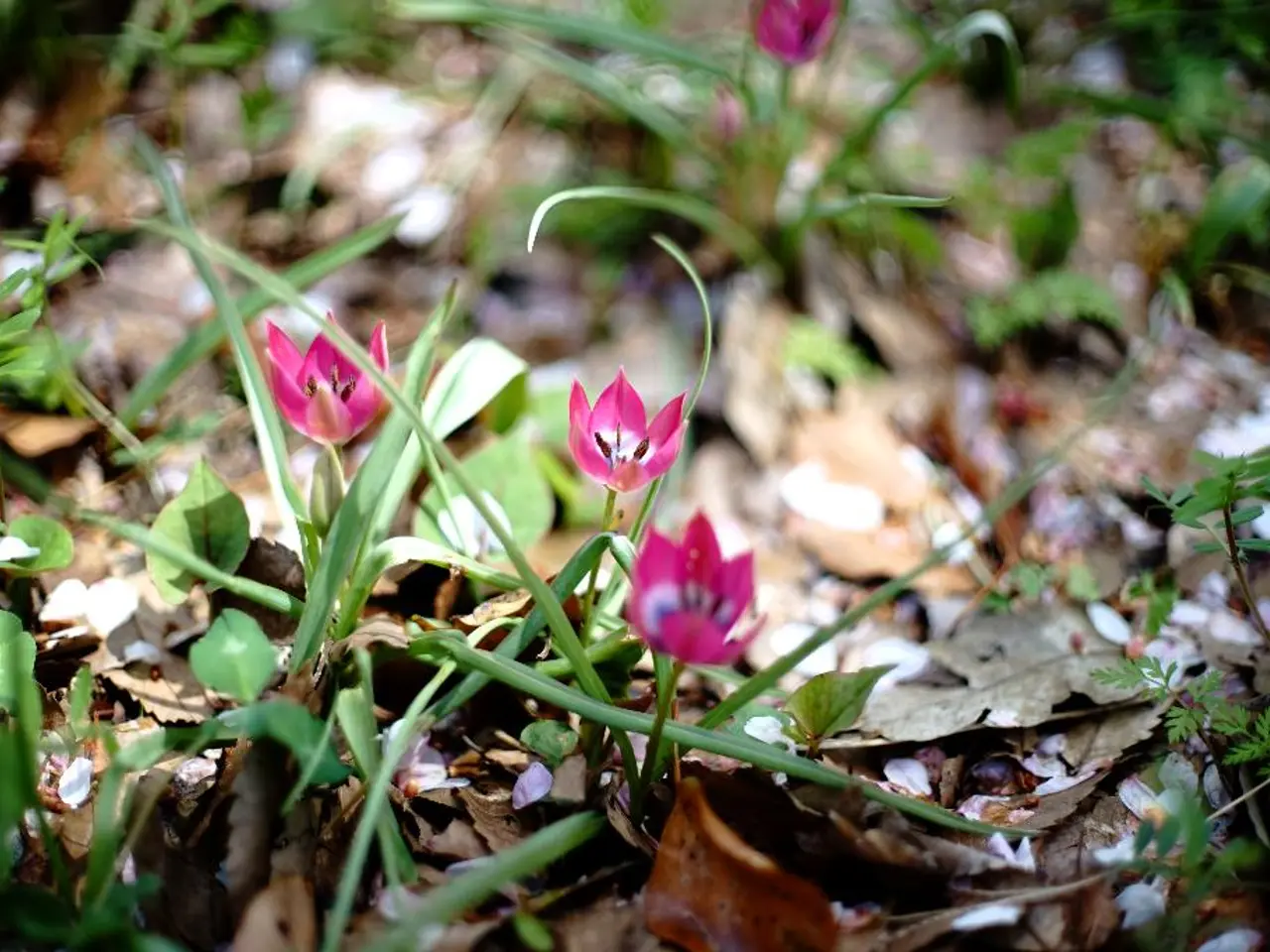Warning Off Airs 18 Vegetations That Should Not Be Decapitated According to Experts
==================================================
In the world of gardening, deadheading—the practice of removing spent flowers—is a common technique used to prolong blooms and maintain a neat appearance. However, not all plants benefit from this practice, and some even require their spent blooms to remain for ecological and aesthetic reasons.
One such example is Russian Sage, whose silvery foliage and lavender-blue flowers persist into fall. Cutting these blooms during their peak robs pollinators and the garden of its soft silhouette. Similarly, goldenrod's tall plumes feed bees in late summer and birds through fall. Deadheading stifles its ecological role and seasonal interest.
Lion's Tail, with its seasonal tubular blooms for hummingbirds and bees, is another plant that should not be deadheaded prematurely. Destroying the spike halts all further flowering. Perennial verbenas, adored by butterflies, share a similar fate. Cutting too early stops new clusters and disrupts pollinator visits.
Many plants provide seeds or nectar to pollinators and birds, and deadheading removes essential food resources. Skipping deadheading creates an ecosystem that supports wildlife, conserves labor, and elevates your garden's natural rhythm.
Coneflowers, with their extraordinary beauty and wildlife value, are a prime example. As they fade, their spent blooms form seedheads rich in nutrients, perfect nutrition for finches in fall and winter. Lupine, beloved by bees and butterflies, also provides valuable seedpods for pollinators. Cutting blooms early prevents natural reseeding.
Helenium's daisy-like blooms bloom mid-to-late summer into fall, their seedheads feed birds, and their ongoing blooms support pollinators. So, don't remove them too soon. Trailing Petunia/Supertunia are "self-cleaning," meaning spent flowers drop on their own and don't need your TLC. Removing them may slow your display.
Bee Balm (Monarda) can reseed energetically, but removing all flowerheads may restrict their long season of color. Columbines are natural reseeders; removing a flower means losing the chance at next season's blooms. Let seedheads form if you want more plants.
Common Sunflower (Helianthus annuus) seedheads are important food sources for birds, and deadheading them stops seed development. Asters provide a vital late-season nectar source and their airy seedheads are enjoyed by goldfinches. Cutting them in June kills both benefits.
Rudbeckia's sunny flowers transform into seed clusters highly sought after by native birds like goldfinches, so let them age and stay. Some species naturally discard spent blooms or reseed for free, saving effort and ensuring rebloom.
Jerusalem Sage continues blooming on its ever-lengthening stems if left intact. Pruning during bloom halts the show. Chia produces continuous small purple blooms along its stems. Removing them prematurely stops the cycle and frustrates both plant and pollinators.
Yarrow's flat-top blooms last indefinitely and become seed heads that birds enjoy later. Full removal stops seed set and limits wildlife attraction. Sedum's succulent foliage and flower clusters remain attractive through late frost. Pruning them in summer sacrifices both winter structure and edibility for birds.
In contrast, some flowers are recommended for deadheading to promote prolonged or additional blooming. However, for the reasons mentioned above, some plants are best left unaltered once flowering fades.
For instance, Rugosa roses and dogwood roses produce rose hips after flowering, which are edible and beneficial for birds in winter. Deadheading early prevents hips from forming, so gardeners are encouraged to stop deadheading once hips start developing to support wildlife.
In conclusion, gardeners should observe the specific needs and natural habits of their plants, sometimes allowing flowers to remain for ecological or aesthetic benefits rather than routinely deadheading all spent blooms. By doing so, we can create a more sustainable and wildlife-friendly garden.
[1] Garden Myths: Deadheading
[2] Deadheading: When to Cut Back Annuals
[3] Deadheading: When to Deadhead Perennials
[4] The Importance of Deadheading
- Russian Sage and goldenrod, with their remarkable endurance into fall, should not be cut back for Deadheading, as it robs pollinators and the garden of their soft silhouette.
- Bird-attracting plants like Lion's Tail, perennial verbenas, and common sunflower benefit from keeping spent blooms, as they provide essential food resources for pollinators and birds.
- While some flowers like Trailing Petunia/Supertunia are 'self-cleaning', others, such as Bee Balm (Monarda) and Columbines, are natural reseeders that will grow more plants if you let seedheads form.
- Asters and Rudbeckia offer valuable late-season nectar sources and seed clusters for goldfinches, so it's best to leave them untouched.
- Jerusalem Sage and Chia continue to bloom if left unpruned, but yarrow and sedum, with their long-lasting flat-top and flower clusters, attract birds during winter if seedheads are left to mature.
- Deadheading common annuals can promote prolonged blooming, but it's essential to understand the specific needs and natural habits of each plant to create a sustainable and wildlife-friendly garden.
- Some plants, like Rugosa roses and dogwood roses, produce edible and beneficial rose hips for birds in winter, which cannot form if Deadheading occurs too early.
- In the home-and-garden lifestyle, an informed approach to gardening involves observing the ecological and aesthetic benefits of letting some flowers remain uncut, rather than merely focusing on maintaining a neat appearance.
- In the world of fashion-and-beauty, one might draw parallels between the creativity and thoughtfulness needed in selecting flowers for a garden and the curation of personal style and beauty.
- Researching the needs and habits of various plants allows gardeners to make mindful decisions about when to Deadhead or let flowers go to seed, fostering harmonious relationships between gardens, wildlife, and pollinators.





